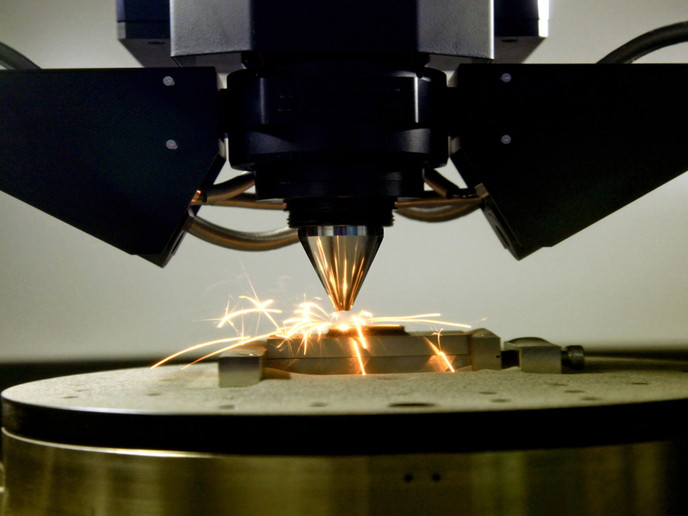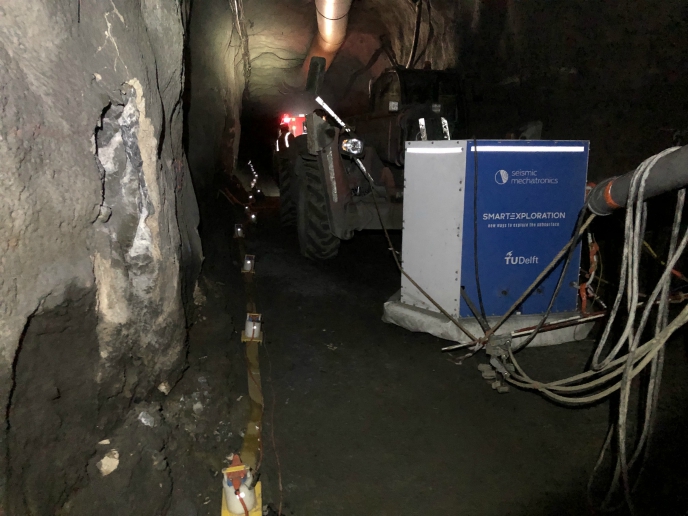Swarming with self-assembling robots
One of the key developments of the SWARM-BOTS project is the design and implementation of a swarm-bot, that is an artefact consisting of 35 s-bots. This colony features increased self-organising and self-assembling capabilities to adapt to its environment. The hardware design of an s-bot is based on a differential TREELS drive system that consists of TR-acks and wh-EELS. Aided by motor control each treel allows the s-bot to move in the environment and rotate on the spot. Via a motorised axis the motor base with the treels can rotate with respect to the main body of the s-bot. There are two types of possible physical interconnections between s-bots, a rigid and a semi-flexible connection. Rigid connections can be accomplished with the aid of a gripper that is mounted on a horizontal active axis. This gripper has a huge acceptance area that offers a secure grasp at various angles and lift another s-bot if required. On the other hand, flexible arms actuated by three motors found at the point of attachment on the main body allowing implementation of semi-flexible connections. The arm can perform movements with three degrees of freedom laterally and vertically with extension and retraction options as well. Each s-bot constitutes a totally independent mobile robot capable of navigating in an autonomous way, perceiving its surrounding environment and grasping objects. S-bots can communicate with each other through advanced sensors and join themselves in either a rigid or flexible way to form a swarm-bot. On the basis of a distributed adaptive control architecture mimicking ant colony behaviours, swarm-bots can accomplish difficult tasks such as exploration, navigation and transportation of heavy objects on very rough terrains. Potential applications could involve semi-automatic space exploration, search for rescue or underwater exploration. Collaboration is sought with a company active in consumer electronics (cleaning), or logistics, or cargo organisation, or special-purpose exploration. The partner needs to be willing to develop a commercial system for transportation, surveillance, exploration, or cleaning activity.





